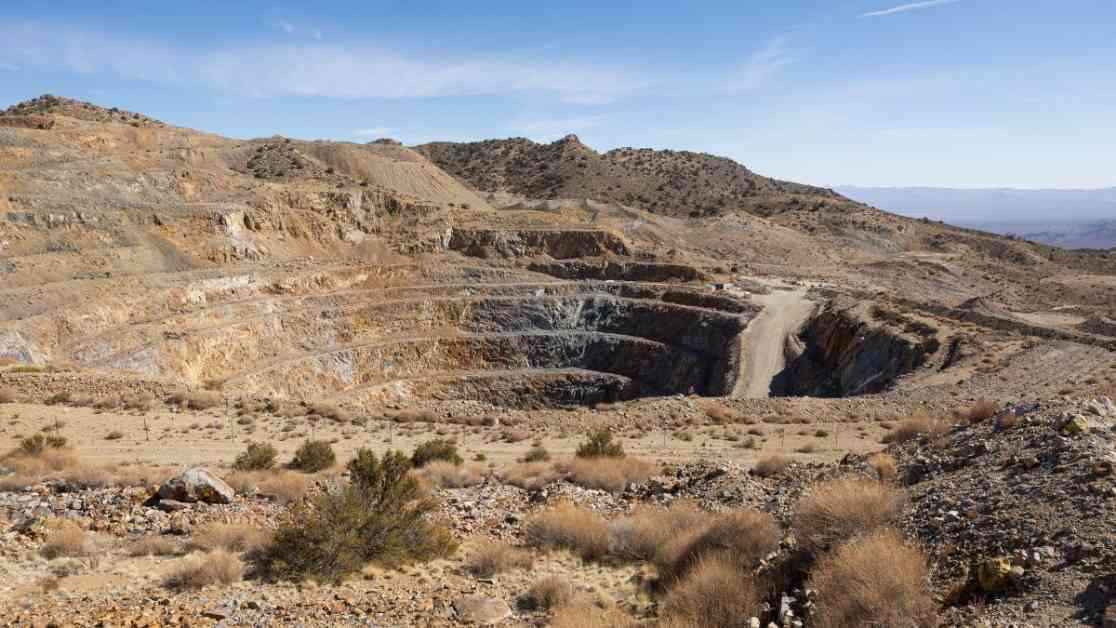The Mojave National Preserve, located in California, has become a battleground for a conflict between park rangers and Australian mining company, Dateline Resources Ltd., over rare earth minerals found in the historic Colosseum Mine. What initially began as a gold and silver mine dating back to the late 1800s has now become a site of contention as miners seek permission to extract rare earth minerals crucial for advanced technologies.
The National Park Service has raised concerns about environmental damage in the area, citing the rich biodiversity of rare plants that could be impacted by mining activities. On the other hand, the mining company argues that they have the right to operate the mine based on plans submitted over 40 years ago to the Bureau of Land Management. With several elected officials backing the mining company, the debate has escalated to include discussions on national security and the need for America to reduce its reliance on China for rare earth minerals.
As tensions rise, environmentalists are closely monitoring the situation, viewing it as a litmus test for the Trump administration’s approach to commercial activities on public lands. The conflict at the Colosseum Mine is not just about mineral extraction but also about the protection of America’s natural landscapes and the delicate balance between economic development and environmental conservation.
Uncovering the History of the Colosseum Mine
Situated near the California-Nevada border, the Colosseum Mine has a rich history dating back to the late 1860s when gold was first discovered in the area. Over the years, intermittent mining activities have taken place, with a resurgence in the 1980s and ’90s driven by rising gold prices. As the mine changed ownership and the regulatory landscape evolved, the focus shifted from gold extraction to rare earth minerals, sparking a new wave of controversy.
The rocky road leading to the mine winds through the diverse landscape of the Mojave, offering a glimpse of the region’s unique flora and fauna. From desert tortoise habitats to lush mountain peaks, the Colosseum Mine sits at the intersection of natural beauty and industrial activity, raising questions about the trade-offs between economic prosperity and environmental preservation.
Stakeholder Standoff: Park Rangers vs. Mining Company
The clash between the National Park Service and Dateline Resources Ltd. underscores broader concerns about resource management, environmental stewardship, and national security. While the mining company asserts its right to operate based on past approvals, park rangers emphasize the need for stringent oversight to safeguard the fragile ecosystem of the Mojave National Preserve. The dispute is not just about one mine but about the principles that govern the use of public lands and the protection of natural resources for future generations.
As elected officials weigh in on the debate, the fate of the Colosseum Mine hangs in the balance, with implications reaching far beyond the boundaries of the Mojave. The conflict highlights the complex interplay between economic interests, environmental concerns, and regulatory frameworks in the context of a changing political landscape.
In the midst of this standoff, environmentalists, scientists, and conservationists are raising alarm bells about the potential impact of mining activities on rare plant species, pollinators, and the overall biodiversity of the region. The question of how to balance the need for economic development with the imperative of environmental conservation remains at the heart of the conflict, shaping the future of the Colosseum Mine and setting a precedent for similar disputes on public lands across the country.
As the debate rages on, the fate of the Colosseum Mine serves as a microcosm of larger debates about resource extraction, environmental protection, and the competing interests vying for control of America’s natural treasures. The outcome of this conflict will not only determine the future of a single mine but will also reverberate through the halls of power, shaping policies and practices that will define the relationship between humans and nature in the years to come.


